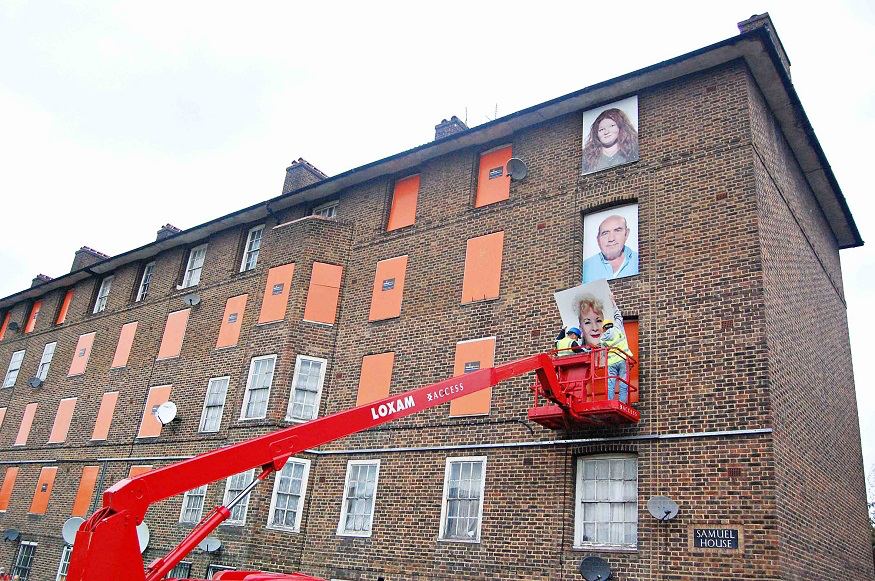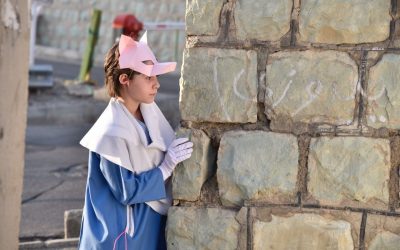by Armin Etemadi
Andrea Luka Zimmerman’s cinema is basically about the empty and un-narrated spaces between the lines. She puts her finger on outcast human beings of whom no traces can be seen in the media, in history, or in any other marketable material, as though they do not exist. By narrating the unspoken part of society, Andrea wants to unveil the hypocrisy and lies of the media, and along with it, capitalism (of which the media is an important creation). By observing the collection of her works, one can understand her interest in these neglected people and presenting a true picture of them.
What attracts the most attention in these works is the empathetic angle that Andrea adopts towards people by her camera. In the mainstream cinema, even among filmmakers who try to adopt an empathetic stance towards those below the poverty line or isolated from society, there is still a kind of strutting or top-down view of the subject that negatively affects the audience’s sense of sympathy. The camera of a mainstream filmmaker, because it generally comes from a different position from her intended subjects, is unconsciously incompatible with an honest narrative, and this dishonesty is compounded in documentary works, because the people in documentaries are real and are no longer supposed to play a role. But again, these same real people in front of the camera of a Hollywood or commercialised filmmaker, unconsciously fall deeply into a role and begin to `play’ it; because the filmmaker destroys their natural sense of self with his grandiose cinematic tools and arrogant tone. They understand very well that the filmmaker comes from a different background from them and how he stands apart from his subjects throughout the filming and even pities them.
In Andrea’s cinema, however, there is no trace of pity or even mere recording of events. It is as if the filmmaker has `lived’ among her subjects. Because of her awareness and similar lived experience with these people, she becomes one with them instead of `invading’ their private lives. Andrea does not make films in the conventional sense of the word, but shares her subject’s moments of joy and sorrow, just as they do. She photographs their street performances, dances, and joys, as she shows their tears and loneliness with transparent humility in choosing the camera angle. She eats with them and sits next to them and at their level. This is why Andrea’s subjects express all their experiences with ease, as if there were no cameras in front of them. In Here for Life, there is a brilliant sequence in which two disadvantaged characters are placed in a satirical position in front of advertising banners that show images of London’s affluent and commercial sector. Andrea’s frame is chosen to cover these pretty 2D images in the background. The pictures include the bedrooms and living rooms of affluent urban houses, the green parks of London with happy people, etc. In the meantime, the people in Andrea’s story enter the frame in front of these two-dimensional images in a satirical situation and act as if they were living in those conditions themselves: in a dramatic way, they sit on a stylish two-dimensional sofa, drink from the two-dimensional Nescafe on a park chair, or pick fruits from an expensive stone table and bite at them in a theatrical way, and so on. This bitter humour shows Andrea’s deep understanding of the situation of these people. The people in Andrea’s film, while looking for prosperity and better economic conditions, nevertheless goof on this prosperity at times. They even joke about their own situation and at times they laugh for no reason and feel happy. The media has always avoided portraying this real and non-hypocritical life, because its interest has been to arouse pity. The media has always tried to show the lives of the deprived people in society within an exotic and unsympathetic framework, and the commercial filmmaker has also acquiesced to this trend while reaping all kinds of festival awards with his unrealistic representations. But Andrea’s cleverness here is to disrupt the rules of the game: she portrays everything flawlessly and uncensored, and it is this presentation of the entirety of these people’s lives that ultimately creates empathy. In their form and content, Andrea’s films are a step beyond mere filmmaking. Andrea has risen up against a structure, and this struggle is evident in all aspects of the back and front of the scenes, from the choice of camera type, the arrangement of the people, the staging, and even the cost of her films.

Armin Etemadi
Andrea Luka Zimmerman’s cinema is not limited to showing people; she is a fully fledged ecofeminist. In Andrea’s view, the phenomenon of colonialism in gender, race, different ecosystems, social environment and nature all take place together. The people in Andrea’s films have an organic connection to their living context. Her films are full of symbolisms empty of nature that has been degraded under urban colonialism, small cities and social housing states that are separated from tall urban skyscrapers, plants that have grown in the heart of a rough un-carved pavement, and… In many of the shots, people are shown behind the fences. In her last film, Wayfaring Stranger, a young girl emerges from the heart of a glamorous modern, urban centre. She escapes colonialism and its relations, and with each passing day, she grows bigger and takes on different shapes and ethnicities. With each step of her departure from the circle of industry and capitalism, the girl gets closer and closer to that pristine nature that has been spared from the colonisers’ harm. `Wayfaring Stranger’ is the story of a sisterly and feminist coexistence in the lap of nature. Unlike classic films, the main character has no stability in terms of look and typology. She is constantly changing, from race to race, from body to body, and from age to age. That is why I emphasise that Zimmerman’s form of cinema, in addition to its rich content, also fights against the narrative structure imposed in cinema. From the very beginning of the history of cinema, capitalism and the film companies’ tastes have conditioned us with a particular form of heroism, narrative and drama writing, and have made us believe that it is not possible to tell a story without this formula. Andrea, however, breaks all these hollow rules and opens a new perspective of the cinematic narrative before the audience’s eyes. In another one of her films, Taşkafa, Stories from the Street, she travels to Turkey and depicts the life of street dogs (as if they were another manifestation of the same isolated people in her other films). In Andrea’s world, discrimination in all its dimensions is related to each other. She believes that it is only with a comprehensive view of the whole problem that a correct understanding can be reached. That is why I strongly recommend that you don’t just confine yourself to watching a particular film by Andrea, but see all of her works together.
In a risky move, Andrea even goes after people who were once at the heart of the system, and when they realised its inherent corruption, they were isolated and ostracised. In Erase and Forget, she goes to one of the most important soldiers in American history, who was present and fought in various wars in American history, from Vietnam to the Philippines and committed many crimes. At some point he realised the lies of the media, the army, and everything that was accepted as the truth — and now he is depicted in the streets, in the wilderness of the desert, and in the nature that he has denied for years. Bo Gritz, a former US Army colonel, was the main source of inspiration for the creation of the character of Rambo. Throughout the documentary Erase and Forget, images of scenes from the glamourising Rambo films are shown alongside Gritz’s real-life narrations. The contrast between what we see in Rambo’s heroism-filled films (especially in the Hollywood sequels and not the original [First Blood]) and Bo Gritz’s harsh and anxious narrations is the foundation of the work’s harrowing and frank narrative. The film cleverly begins with the heroic portrayal of Gritz in the media and the endless displays of bravery and insignia on his military uniform, and ends with a naked, plain, and shattered image of him standing in a dehumanised wilderness, looking at us, face to face, at all that he has destroyed.
This nakedness takes on a more physical and metaphorical form at the end of the documentary Here for Life. In contrast to Bo Gritz, the homeless people depicted in Here for Life in the film’s final scene are literally stripped naked and dancing freely in a vast green plain (with an urban perspective in the background). The sound of the song by one of the characters in the story can be heard accompanied by the pictures of this joyful and free dance. It is as if this transcendent ending is the liberation that Andrea, this ‘strange wayfarer’, imagines for the end of her tumultuous journey and that of people like her.











